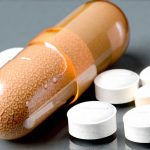Bladder spasms can be incredibly disruptive, causing sudden urges to urinate, discomfort, and even pain. For many individuals dealing with conditions like overactive bladder (OAB), interstitial cystitis, or simply experiencing stress-induced urgency, finding natural ways to manage these symptoms is a priority. While medical interventions are often necessary, dietary adjustments can play a significant role in reducing the frequency and intensity of spasms. Understanding how certain foods interact with bladder health is crucial for taking control of this frustrating condition, offering relief and improving overall quality of life. This article will explore the power of food as medicine, focusing on nutrients and specific options that may help soothe an irritated bladder and minimize those unwanted contractions.
It’s important to state upfront that everyone reacts differently, and what works wonders for one person might have little effect on another. There is no ‘one-size-fits-all’ solution when it comes to managing bladder spasms. However, a mindful approach to dietary changes – focusing on anti-inflammatory foods, hydration strategies, and avoiding known triggers – can often provide noticeable improvement. The following information aims to empower you with knowledge so you can make informed choices about your diet and potentially find relief from the discomfort of bladder spasms. Remember to always consult with a healthcare professional for personalized advice tailored to your specific situation.
Dietary Strategies for Bladder Health
A cornerstone of managing bladder spasms naturally involves adopting an anti-inflammatory diet. Chronic inflammation can exacerbate bladder irritation, leading to increased frequency and severity of spasms. Therefore, focusing on foods rich in antioxidants and omega-3 fatty acids is paramount. This isn’t about restrictive dieting; it’s about making mindful choices that nourish your body and support optimal bladder function. Prioritizing whole, unprocessed foods over sugary drinks, processed snacks, and refined carbohydrates will lay the foundation for a healthier bladder.
Beyond anti-inflammatory options, hydration plays an equally important role. While it seems counterintuitive to drink more fluids when you’re already experiencing urgency, dehydration actually concentrates urine, making it more irritating to the bladder lining. The goal is to maintain consistent, moderate hydration throughout the day – avoiding large gulps which can overwhelm the bladder. Sipping water regularly and spreading fluid intake evenly helps dilute urine and reduces irritation. Herbal teas (specifically those listed later) can also contribute to daily fluid intake while offering additional benefits. If you are looking for ways to stay hydrated without triggering urgency, explore hydration strategies that support bladder health.
Finally, identifying and eliminating food triggers is key. Common culprits include caffeine, alcohol, artificial sweeteners, spicy foods, acidic fruits (like citrus), and carbonated beverages. Keeping a food diary for a week or two can help pinpoint which foods specifically worsen your symptoms, allowing you to make informed adjustments to your diet. This process of elimination is often essential in discovering what uniquely triggers bladder spasms for each individual.
Foods to Incorporate Regularly
Several foods have demonstrated potential benefits in reducing bladder spasms due to their specific nutritional properties. Blueberries are a powerhouse of antioxidants, specifically anthocyanins, which combat inflammation and may protect the bladder lining. Similarly, cranberries (unsweetened) contain A-type proanthocyanidins that can help prevent bacteria from adhering to the urinary tract walls – reducing risk of infection which can often trigger spasms. Incorporating these berries into your diet as snacks or additions to breakfast foods is a simple way to boost bladder health.
Pumpkin seeds are another excellent addition, offering magnesium and zinc – minerals known to support bladder function and reduce muscle contractions. Magnesium plays a vital role in nerve transmission and muscle relaxation, while zinc contributes to overall immune function and tissue repair. A small handful of pumpkin seeds daily can provide these essential nutrients. Additionally, foods rich in vitamin D, like fatty fish (salmon, tuna) or fortified dairy products, have been linked to improved bladder control. Vitamin D deficiency has been associated with increased OAB symptoms.
Finally, consider incorporating probiotic-rich foods into your diet. Yogurt (unsweetened), kefir, and fermented vegetables like sauerkraut contain beneficial bacteria that support gut health. A healthy gut microbiome can indirectly influence bladder function, as there’s a growing understanding of the gut-bladder axis – the connection between intestinal flora and urinary tract health. To further benefit your bladder lining, consider incorporating prebiotic-rich foods into your diet.
Soothing Herbal Teas
Herbal teas offer a gentle and natural way to soothe bladder irritation and potentially reduce spasms. Chamomile tea is renowned for its calming properties and can help relax the bladder muscles, reducing urgency and frequency. Peppermint tea, though sometimes controversial (it can worsen symptoms in some individuals), has shown promise in relaxing smooth muscle tissue – which includes the bladder walls. It’s crucial to test tolerance before regularly consuming peppermint tea.
Ginger tea possesses anti-inflammatory properties that may help reduce overall inflammation in the urinary tract. However, moderation is important as excessive ginger can sometimes be irritating. Marshmallow root tea is another excellent option; it contains mucilage – a gel-like substance that coats and soothes the bladder lining, providing relief from irritation. Always choose organic teas to avoid potential contaminants or pesticides.
When preparing herbal teas, allow them to steep for the recommended time (usually 5-10 minutes) to maximize their beneficial compounds. Avoid adding sugar or artificial sweeteners, as these can exacerbate bladder symptoms. Sipping a warm cup of herbal tea several times throughout the day can provide both hydration and soothing relief from bladder spasms. Explore herbal teas to reduce bladder irritation for additional options.
Hydration Strategies & Avoiding Irritants
Maintaining adequate hydration is essential, but how you hydrate matters just as much as how much. Avoid chugging large amounts of water at once, as this overwhelms the bladder and increases urgency. Instead, sip small amounts consistently throughout the day – aiming for a steady intake rather than sporadic large volumes. Carry a water bottle with you as a visual reminder to stay hydrated.
Beyond water, consider incorporating electrolyte-rich beverages like coconut water or diluted sports drinks (low in sugar) if you’re losing fluids through sweating or other activities. Electrolytes help regulate fluid balance and support proper nerve function. Simultaneously, minimize consumption of bladder irritants. This includes caffeine (coffee, tea, soda), alcohol, carbonated beverages, artificial sweeteners, spicy foods, and acidic fruits like citrus and tomatoes.
A food diary is invaluable for identifying your specific triggers. Record everything you eat and drink, noting any associated symptoms – urgency, frequency, pain, or discomfort. After a week or two, review the diary to identify patterns and pinpoint which foods consistently worsen your bladder spasms. Eliminating these triggers can significantly improve your symptom management. Be patient with this process; it may take time to discover what uniquely affects you. Understanding which foods irritate a sensitive bladder can help streamline this process.





















